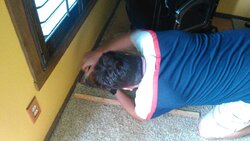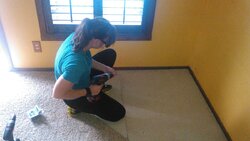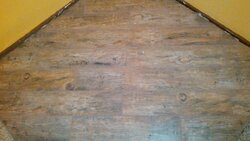Good AM!
My name is Ryann (yes, a girl named Ryann). I just bought a black Breckwell SPC50. I live in Florida (Spring Hill area) and yes, I bought a pellet stove for here. I like the efficiency of them, but even more so I like the aesthetics. I live near the water on a stilt home. I just received this big @$$ pallet a few days ago, weighs close to 400lbs. I guess the first step will be getting it upstairs. I'll tackle that soon...
Questions to follow:
Hearth pad: I plan on integrating a pad into my floor, as I want to put all wood throughout my house. In the corner, I plan on doing slate. Figure plywood, cement board, slate tile, good to go. Anything up the wall I need? I believe clearance for this is crazy small, anywhere from 1"-3" depending on positioning (like corner, etc.)
Homeowner's Insurance: Call them up to see if this will be cool? Any additional costs? I've read it may not change or maybe like > $50/year. Will they ask if I permitted it? Brings me to my next bullet point...
Permit: Do I need one? I don't like the county with their nose in my business. I've read from someone who posted that was located in Spring Hill also, the guy came, took a few seconds to look, then checked it off. Why pay a couple hundred bucks for that? They don't even know what they are looking for.
Flue: I only ordered the stove. I have not ordered any piping. I have an atypical setup. I think if I acquire enough posts I can post some pictures. My house in on stilts, so ground floor is open, second floor is living room (where stove will be next to exterior wall), top floor is bedrooms. I actually think I can vent to exterior wall and not have to penetrate my roof since I should be able to extend vertically at least 7' without doing so. I will have to check on that.
Any tips or tricks greatly appreciated. My husband and I will (hopefully) be doing this. We don't know what we're doing but we have a lot of knowledgeable "older" people that know a lot and could assist. I also think with the internet we should be able to do this. I am very hesitant cutting holes in my house, however, particularly though my hardie board, etc. I think we'll need two holes, one to vent and one for fresh o2.
Thanks a lot guys and looking forward to a nice winter with this!
EDIT: Pictures added
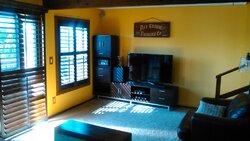
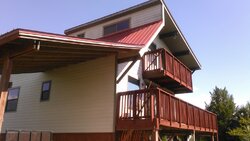
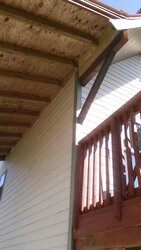
My name is Ryann (yes, a girl named Ryann). I just bought a black Breckwell SPC50. I live in Florida (Spring Hill area) and yes, I bought a pellet stove for here. I like the efficiency of them, but even more so I like the aesthetics. I live near the water on a stilt home. I just received this big @$$ pallet a few days ago, weighs close to 400lbs. I guess the first step will be getting it upstairs. I'll tackle that soon...
Questions to follow:
Hearth pad: I plan on integrating a pad into my floor, as I want to put all wood throughout my house. In the corner, I plan on doing slate. Figure plywood, cement board, slate tile, good to go. Anything up the wall I need? I believe clearance for this is crazy small, anywhere from 1"-3" depending on positioning (like corner, etc.)
Homeowner's Insurance: Call them up to see if this will be cool? Any additional costs? I've read it may not change or maybe like > $50/year. Will they ask if I permitted it? Brings me to my next bullet point...
Permit: Do I need one? I don't like the county with their nose in my business. I've read from someone who posted that was located in Spring Hill also, the guy came, took a few seconds to look, then checked it off. Why pay a couple hundred bucks for that? They don't even know what they are looking for.
Flue: I only ordered the stove. I have not ordered any piping. I have an atypical setup. I think if I acquire enough posts I can post some pictures. My house in on stilts, so ground floor is open, second floor is living room (where stove will be next to exterior wall), top floor is bedrooms. I actually think I can vent to exterior wall and not have to penetrate my roof since I should be able to extend vertically at least 7' without doing so. I will have to check on that.
Any tips or tricks greatly appreciated. My husband and I will (hopefully) be doing this. We don't know what we're doing but we have a lot of knowledgeable "older" people that know a lot and could assist. I also think with the internet we should be able to do this. I am very hesitant cutting holes in my house, however, particularly though my hardie board, etc. I think we'll need two holes, one to vent and one for fresh o2.
Thanks a lot guys and looking forward to a nice winter with this!
EDIT: Pictures added



Last edited:



